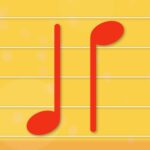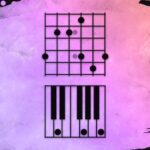Build Your Skills
Learn music theory Train your ears Track your tempoRead Now
Get the Newsletter
Categories
- | BeatMirror (10)
- | HearEQ (11)
- | Waay (22)
- | WaayFinder (1)
- Audio (16)
- For musicians (34)
- Guitar (2)
- Music theory (15)
- News (42)
- Startup stories (2)
- Tutorial (4)
Keep in Touch
About Ten Kettles
We love music, we love learning, and we love building brand new things. We are Ten Kettles.
Read more >-
November 24, 2015
The Hills, The Weeknd, and Music Theory
This song is fantastic. It catches your attention immediately and then reveals itself more and more with each listen. The chorus has this cool underwater, apocalyptic, sexy feel and the melody is great. So, we’re going to take a closer look, jump right into the chorus, and figure out what’s going on. Ready? Let’s talk music theory.
There’s this word “transcription” and just in case you haven’t run into it before, it basically means “writing down the notes you hear.” We’re going to start by transcribing the chorus melody, figuring out the key, and then using the key to find the chords.
NOTE: Explicit lyrics.
The Melody
You can transcribe the melody in any number of ways, but one of the best ways is to use your ears, voice, and an instrument. Here goes:
- Sing the melody. Listen to the first line “I only call you when it’s half past five” and sing/hum the first few notes. Don’t worry about the words, or whether it sounds good, just try and make the notes sound similar to the recording. Listen to the melody, sing it or hum it, and then keep repeating till you’ve got it. Here’s the line:
- Find the notes Got it? Nice. Next step is to find those notes on your instrument. You can use any instrument you know, but if you’re new to playing music you can try something like an online piano or our very own NoteBoard. (You can play the notes with your computer keyboard, and it records them on-screen.) Poke around until you get that first note, then continue on until you get the notes for the whole line. Give it a try and then compare your notes with these:
G G G B♭ G F
“I only call you whenE♭ F C E♭
it’s half past five”
The Chords
Now that we have the melody, it’s time to get the chords! With just these two things—the chords and the melody—you’ll be able to play and sing this part on any instrument. Here goes.
- Get the key Now that we have the chorus notes, we can guess the key pretty easily. If you’re comfortable with keys and scales, you’ll see the prominent C minor chord traced out in the melody—C E♭ and G—and that the rest of the notes fit perfectly into the C minor key. If you’re still learning your scales, you can just plug the notes into KeyFinder (and then build your scale skills with Waay!).
- Count the chords How many chords are we looking for? Listening to the chorus in the video above, you can hear the first chord kick in when he sings “half” (at 0:44). Take a listen to the song to hear what I mean. Tapping your foot to each beat, you’ll hear the second chord come in four beats later (0:48), and then another chord after four more beats, and finally the last chord at 0:57. So, that’s four chords. (Then the pattern repeats.)
- Find the chords So what are these four chords? Let’s start by taking a look at the chords in the key of C minor:
Cm D° Eb Fm Gm Ab Bb
The first chord in a song’s verse or chorus is often just the first chord in that key. In this case, that’s Cm. Play a C minor chord at 0:44 and you’ll hear it fits perfectly. To get the next chords, we’ll do some trial and error—with just six other chords it’s a pretty quick process. Give it a try and see if you get the same as me:
Cm Ab Fm Ab
That’s it! You can now use the exact same technique for many other songs, learning the chords and melody, and then playing them on your own instrument. Have a request for a song study? Let us know. Want to learn more music theory? Check out our app “Waay: Music theory that matters.”
- Sing the melody. Listen to the first line “I only call you when it’s half past five” and sing/hum the first few notes. Don’t worry about the words, or whether it sounds good, just try and make the notes sound similar to the recording. Listen to the melody, sing it or hum it, and then keep repeating till you’ve got it. Here’s the line:



Comments